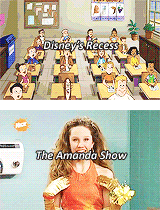For “Hamlet”







For “Hamlet”
Наставление Полония сыну Лаэрту…
“Держи подальше мысль от языка, А необдуманную мысль – от действий. Будь прост с другими, но отнюдь не пошл. Своих друзей, их выбор испытав, Прикуй к душе стальными обручами, Но не мозоль ладони кумовством С любым беспёрым панибратом. В ссору Вступать остерегайся; но, вступив, Так действуй, чтоб остерегался недруг. Всем жалуй ухо, голос – лишь немногим; Сбирай все мненья, но своё храни. Шей платье по возможности дороже, Но без затей – богато, но не броско; По виду часто судят человека; А у французов высшее сословье Весьма изысканно и чинно в этом. В долг не бери и взаймы не давай; Легко и ссуду потерять и друга, А займы тупят лезвее хозяйства. Но главное: будь верен сам себе; Тогда, как вслед за днём бывает ночь, Ты не изменишь и другим. Прощай; Благословеньем это всё скрепится.” …
Polonius advice for Laertes…
“Look thou character. Give thy thoughts no tongue, Nor any unproportion’d thought his act. Be thou familiar, but by no means vulgar: Those friends thou hast, and their adoption tried, Grapple them unto thy soul with hoops of steel; But do not dull thy palm with entertainment Of each new-hatch’d, unfledg’d comrade. Beware Of entrance to a quarrel; but being in, Bear’t that th’ opposed may beware of thee. Give every man thine ear, but few thy voice; Take each man’s censure, but reserve thy judgment. Costly thy habit as thy purse can buy, But not express’d in fancy; rich, not gaudy; For the apparel oft proclaims the man, And they in France of the best rank and station Are most select and generous, chief in that. Neither a borrower nor a lender be; For loan oft loses both itself and friend, And borrowing dulls the edge of husbandry. This above all- to thine own self be true, And it must follow, as the night the day, Thou canst not then be false to any man. Farewell. My blessing season this in thee!”
…
More Posts from Studentlifeposts-blog1 and Others

Does Zapping Your Brain Increase Performance?
Here is a picture of the nine-dot problem. The task seems simple enough: connect all nine dots with four straight lines, but, do so without lifting the pen from the paper or retracing any line. If you don’t already know the solution, give it a try – although your chances of figuring it out within a few minutes hover around 0 percent. In fact, even if I were to give you a hint like “think outside of the box,” you are unlikely to crack this deceptively (and annoyingly!) simple puzzle.

The Nine Dot problem: connect the dots by making four lines, without lifting your pencil from the paper
And yet, if we were to pass a weak electric current through your brain (specifically your anterior temporal lobe, which sits somewhere between the top of your ear and temple), your chances of solving it may increase substantially. That, at least, was the finding from a study where 40 percent of people who couldn’t initially solve this problem managed to crack it after 10 minutes of transcranial direct current stimulation (tDCS) – a technique for delivering a painlessly weak electric current to the brain through electrodes on the scalp.
How to explain this?
It is an instance of the alleged power of tDCS and similar neurostimulation techniques. These are increasingly touted as methods that can “overclock” the brain in order to boost cognition, improve our moods, make us stronger, and even alter our moral dispositions. The claims are not completely unfounded: there is evidence that some people become slightly better at holding and manipulating information in their minds after a bout of tDCS. It also appears to reduce some people’s likelihood of formulating false memories, and seems to have a lasting improvement on some people’s ability to work with numbers. It can even appear to boost creativity, enhancing the ability of some to make abstract connections between words to come up with creative analogies. But it goes further, with some evidence that it can help people control their urges as well improve their mood. And beyond these psychological effects, tDCS of the part of the brain responsible for movement seems to improve muscular endurance and reduce fatigue.
It’s an impressive arsenal of findings, and it raises the obvious question: should we all start zapping away at our brains? That certainly seems to be the conclusion reached by the growing DIY community experimenting with home-made tDCS headsets.
But, while the list of supportive studies is far longer than those linked to here, the overall state of the evidence nevertheless continues to occupy that frustrating scientific limbo of being ultimately ambiguous – especially when we take into account all those comparatively boring, non-headline grabbing studies that found no significant effect from tDCS. In fact, a meta-analysis of tDCS studies – one of those laborious studies that study the findings of other studies – found the technique had no effect at all on a wide range of cognitive abilities. Yet that review in turn has been criticized as being too conservative and potentially biased in its own analysis.
More to the point, few of these studies have yet to be replicated, and most of them rely on a handful of unrepresentative people (US undergrads) who are asked to undertake the kind of lab-controlled tasks that usually share a questionable (at best) relationship with real world activities. And as for the long-term effects of tDCS use, or even how it affects brain function exactly? It’s not clear.
Yet none of this haziness has deterred start-ups from developing a slew of commercial tDCS headsets targeting home-users. Primary among those is Foc.us, which started off with a headset that allegedly enhances gaming ability before expanding to ones that improve learning speed as well as athletic endurance. There’s also Thync, a mood-enhancing headset that’s been described as a “digital drug” that can help users “energize or relax without drinks or pills.” While not quite based on tDCS, it uses pulses of electricity to target cranial nerves just under the skin to supposedly induce various moods.
Another such start-up, Halo Neuroscience, recently introduced its own headset, which stimulates motor neurons in a way that supposedly accelerates the strength gains and skill acquisition of athletes.
The firm reports on its own unpublished “preliminary results” with elite Olympic ski jumpers showing a 31 percent improvement in their propulsion force, with significantly less wobble when airborne. Even if a far more modest result than 31 percent turned out to be true, these sorts of findings could mean that tDCS is set to become a significant performance enhancer in the sporting world. Will its use in competitive settings be considered cheating?
In academic contexts, some universities are already trying to curb the off-label use of prescription drugs to enhance academic performance, with Duke University explicitly considering such use as “cheating.” Similarly, the Electronic Sports League, which holds massive gaming tournaments with million dollar prize pools, has started randomly testing players for so-called “smart drugs” that may give e-athletes an edge over their non-doping opponents.
Would using Foc.us’s GoFlow to “learn faster” be considered a similar instance of academic dishonesty by Duke University? Or what about using Foc.us’s gaming headset in the context of shooting down virtual enemies? If these devices give any sort of a boost, it’s not clear why their use should be considered any different from drugs like Adderall or Ritalin, at least in regards to cheating.
In non-virtual sport, the World Anti-doping Agency (WADA) prohibits substances and methods when they satisfy any two of these three criteria: 1. they confer a performance enhancement; 2. they pose an actual or potential risk for athletes; and 3. they violate the “spirit of sport.”
If the preliminary findings from Halo Neuroscience on ski jumping are even remotely valid, the first criterion would certainly be met. On the other hand, it’s not yet clear if tDCS poses a noteworthy potential risk for athletes – though any such risk would almost certainly be smaller than the one involved in soaring over 100 meters through the air, as in the case of ski jumping. But does it violate the difficult to define “spirit of sport”? It’s a question that WADA may wish to avoid: to answer yes may commit it to trying to ban the unbannable. As far as we can tell, tDCS leaves no uniquely detectable impact in the brain: a ban would not be enforceable.
On the other hand, tDCS may simply be construed as not “artificial” enough to threaten our (often arbitrary) notions of fairness, whether in sports or academic settings. Unlike injecting or ingesting a synthetic drug, many may have the intuition that a weak electric current is comparatively “natural” or “clean.” For instance, even though the effects are similar, WADA currently tolerates athletes who increase their red blood cells (and therefore, presumably, their performance) by sleeping in a tent that simulates high altitude, but not those who do so by blood doping or EPO. Something about sleeping in a tent to enhance performance does not strike us as suspect in the way that drugs or blood transfusions do. Perhaps tDCS will be occupy the same corner as altitude tents: for the rule makers, both can be convenient inconsistencies in the rules, as both elude detection anyway.
An yet, while we can question the evidence for the actual efficacy of most performance enhancers currently used, tDCS in particular stands out in calling for more data. Unlike Adderall or anabolic steroids, at the moment anyone can get their hands on a tDCS headset by legally ordering one online. And even if these headsets become more closely regulated, people can still cheaply make their own using common items found at electronics stores, stimulating any part of their brain, or their children’s. Given the current hype around it, it would be good to know more about how exactly it impacts the brain — and the long term consequences.
Top Image: These are increasingly touted as methods that can “overclock” the brain in order to boost cognition, improve our moods, make us stronger, and even alter our moral dispositions. Credit: Fabrice Coffini/GettyImages
Source: Scientific American (By Hazem Zohny)
Challenge yourself. College is scary and intimidating, but it can also be the best time of your life. It’s merely depends on your choices. You can chose to stand on the sidelines and stay the same person you were in high school, or you can open yourself up to new experiences and dive into everything college has to offer. College is the time to learn more about yourself and have fun while doing that. And it does not happen within the confines of your comfort zone. Do something you never thought you would. Sign up for trips. Dare to be different. Explore yourself. Challenge others. Challenge yourself.
Sponsored Zag MacKenzie Allan (’17)
I don’t know if you’ve ever felt like that. That you wanted to sleep for a thousand years. Or just not exist. Or just not be aware that you do exist. Or something like that.
Stephen Chbosky, The Perks of Being a Wallflower (via theliteraryjournals)
100 Days Of Productivity: Day 4
Mere seconds ago I posted my DAY 3 post due to my productivity lag; I manage to get so much done during the day that I dont have time to write these reflections on the same day!

I am planning to get a head start on the remaining stuff left to do today which only involves going for a run and going to see friends; therefore this is sort of already the end of my productive day. The above picture is from a math lesson which I had today from 08:30 till 10, a lesson I usually spend with my head on the desk, occasionally mumbling a muffled ‘’meh’’ when asked how I’m feeling. Instead of the usual moan and groan morning routine I instead decided to switch up on the lack of sleep and just go with it; it ended up being really cool as I understood almost everything (apart from some things on the paper above, as you can see by the number of lines drawn through things) and felt really motivated. Later that day during triple biology I laso decided to change up my attitude as I had spent yesterday’s lesson sleeping for 1.5 hours and completely missing out on everything that happened during the lesson. I totalled roughly 4 pages of written stuff where I usally give up after the first page and proceed to go on tumblr or do something completely pointless with my time. Once into the late afternoon (now) I can feel the energy and motivation start to dwindle, which is why I am writing this day 4 post on day 4 (a personal first).
So if anyone ever does read these, thanks for reading and stay posted for more posts relating to CAS or anything productivity related!

Tomorrow, the Obama administration is expected to issue guidance regarding transgender students in schools. More specifically, the guidelines will tell schools they cannot discriminate against transgender students with regards to bathrooms, housing, sports teams, and many more contexts.
President Obama has been an advocate for trans students for a while, but this will likely be the most direct statement on behalf of trans students yet.
“When a school provides sex-segregated activities and facilities, transgender students must be allowed to participate in such activities and access such facilities consistent with their gender identity,” says a copy of the letter obtained by BuzzFeed News.
The rules apply to restrooms, locker rooms, sports teams, fraternities, sororities, housing, and more.
According to the guidance, school officials cannot require that a transgender student provide identifying documents, such as a birth certificate, or undergo any form of medical validation to qualify. “There is no medical diagnosis or treatment requirement that students must meet as a prerequisite to being treated consistent with their gender identity,” says the letter to school administrators.
This. Is. Incredible.
writers:
break up your paragraphs. big paragraphs are scary, your readers will get scared
fuuuuck epithets. “the other man got up” “the taller woman sat down” “the blonde walked away” nahhh. call them by their names or rework the sentence. you can do so much better than this (exception: if the reader doesn’t know the character(s) you’re referring to yet, it’s a-okay to refer to them by an identifying trait)
blunette is not a thing
new speaker, new paragraph. please.
“said” is such a great word. use it. make sweet love to it. but don’t kill it
use “said” more than you use synonyms for it. that way the use of synonyms gets more exciting. getting a sudden description of how a character is saying something (screaming, mumbling, sighing) is more interesting that way.
if your summary says “I suck at summaries” or “story better than summary” you’re turning off the reader, my dude. your summary is supposed to be your hook. you gotta own it, just like you’re gonna own the story they’re about to read
follow long sentences w short ones and short ones w long ones. same goes for paragraphs
your writing is always better than you think it is. you just think it’s bad because the story’s always gonna be predicable to the one who’s writing it
i love u guys keep on trucking
PREPARATIONS FOR AN EFFECTIVE STUDY SESH
1. Wash your face so you feel refreshed and ready.
2. Get a bottle of cold water and a small healthy snack to stay hydrated and nourished which really does help when you’re studying because it keeps the brain active. A study snack example could be, fruit and nuts or maybe a guilty pleasure (but don’t go overboard!)
3. Clean your study area if it isn’t already. Remember, a messy area = messy brain. But thats not the case always I know. However, a clean and organized study area stimulates your mind and makes you want to sit down and study.
4. Gather ALL your study essentials like your pens, pencils, ruler, paper (basically your general stationery), and most importantly, your actual subject material of course (textbooks, notebooks, handouts and past papers).
5. Lay all your study essentials neatly on the desk to how ever you think everything will be easily approachable.
6. Block out ALL distractions which will prevent you from studying effectively. Turn off your phone and put it away as far as possible. Put away EVERYTHING that you know for a fact that will keep you from studying your best. If you listen to music while you study, then classical music is said to be very helpful, however use the phone just for that purpose, and for what you will encounter in the next tip. You can also use your iPod if you have one or any thing that plays music. Just remember, don’t procrastinate.
7. Set yourself a timer to make sure you don’t spend too much time doing one thing or waste time. Keep your phone ONLY for this purpose, unless your watch can set the timer, anything else. Most popular method is the pomodoro method. If you are unfamiliar with this, let me explain. So basically in this method, you study for about 25-30 minutes and take 5 minute breaks and then a long 15 minute break. You change this to how ever you want but don’t go extreme for example study for a about 40 mins and then take a 20 minute break. No. Again, if using the phone for the timer, PLEASE PLEASE refrain from checking social media.
8. Start the studying now that you are fully prepared. Remember, practice active studying rather than passive studying. Active studying would include annotating lecture notes, doing practice questions, organizing and identifying main points, making summaries, etc. Passive studying would be just reading through your notes.
Hope you found my tips useful (and i hope they made sense) even though you probably saw these everywhere else. I’m just here spreading them out again to remind you what’s better for you and your grades and general studying. My name is Aditi, and I hope everyone is having a fantastic day!









Student Loan Forgiveness
An email I got this morning from the government regarding my student loans:
We recalculated your monthly payment for your Income-Based Repayment (IBR) plan. We used the income documentation […] to determine your monthly payment of $334.66 [….] If you do not recertify or you no longer have a partial financial hardship (PFH), your payment amount will be $641.77.
The power of Income-Based Repayment plans for student loans: I am literally paying half what my monthly payment would be if I didn’t have “income based” forbearance.
The downside of course is that it would take me well over twice the length of time to pay off my loans (given the payment size plus interest), but I am enrolled in Public Service Loan Forgiveness, which means if I am employed with a not-for-profit for another four years, to make ten years total, the balance of my loans, roughly $30K, will be forgiven.
Furthermore, I believe (qualifier: this may no longer be true, I haven’t checked recently) if you are enrolled in IBR and paying based on income, after 25 years your loans will be forgiven regardless of where you work. If you are unemployed, IBR can reduce your loan payments to zero even once you’ve used up your grace period. If you are long-term unemployed, that means in 25 years you will no longer carry student loan debt.
It’s 25 years of payments instead of 10, but it’s better than no help at all.
If you are in a low-earning job (I make just over $50K per year which in Chicago does not go far), IBR can help you keep your head above water and build savings by not charging you through the nose for your loan repayments. IBR is making it possible for me to afford to buy a home.
If you are employed with a charity, public school, private not-for-profit school, government agency, or other 501( c)(3) organization, you also qualify for Public Service Loan Forgiveness, which means after ten years of payments all of your qualifying loans will be forgiven.
A few years ago I wrote up how to apply for IBR and PSLF here. I just went through and updated all the links; it should be a good primer on the kinds of loans and jobs that the setup involves.

“I would love, love, love to play Hamlet,” said James Norton, who was plucked from the Cambridge student body for Trevor Nunn’s production of “Cymbeline” nine years ago and is melting hearts as a jazz-loving vicar in PBS’ “Grantchester.” “But I’m already a bit too old.”
The 30-year-old Norton may think the role has passed him by — although maturity didn’t stop Mel Gibson from doing a 1990 film version at the creaky age of 34 — but there are plenty of other choices in his future.
-
 studentlifeposts-blog1 reblogged this · 9 years ago
studentlifeposts-blog1 reblogged this · 9 years ago -
 scarede liked this · 10 years ago
scarede liked this · 10 years ago -
 abrarova-blog liked this · 10 years ago
abrarova-blog liked this · 10 years ago -
 jollymiraclementalityme liked this · 10 years ago
jollymiraclementalityme liked this · 10 years ago -
 kristina-zd liked this · 10 years ago
kristina-zd liked this · 10 years ago -
 liblackrose liked this · 10 years ago
liblackrose liked this · 10 years ago -
 lamolecule liked this · 10 years ago
lamolecule liked this · 10 years ago -
 igorvel liked this · 10 years ago
igorvel liked this · 10 years ago -
 deyau liked this · 10 years ago
deyau liked this · 10 years ago -
 anastasia-chernikova-blog liked this · 10 years ago
anastasia-chernikova-blog liked this · 10 years ago -
 ver-v-sebya liked this · 10 years ago
ver-v-sebya liked this · 10 years ago -
 tatyana190500 liked this · 10 years ago
tatyana190500 liked this · 10 years ago -
 vanengraph reblogged this · 10 years ago
vanengraph reblogged this · 10 years ago
Best education ,student life , best life,best university
69 posts